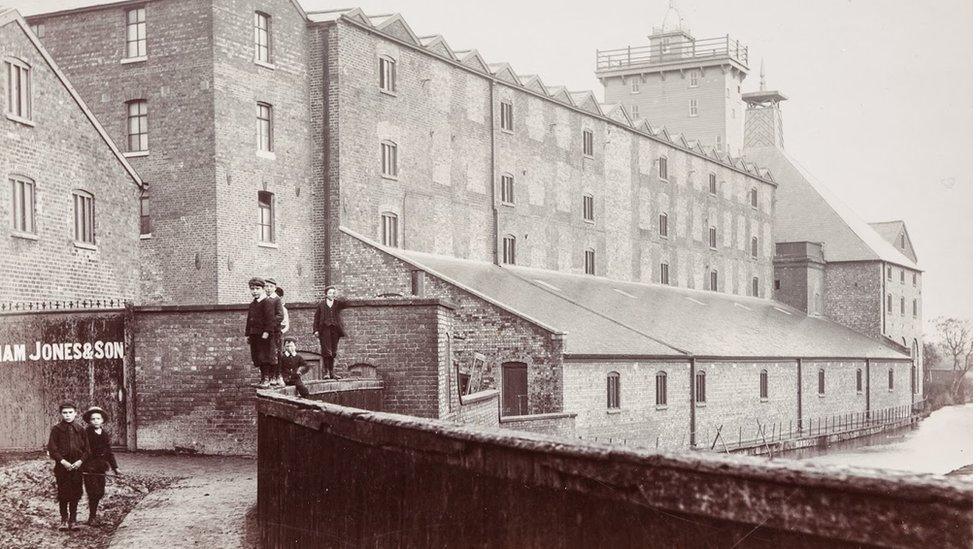Shrewsbury's Ditherington flax mill set to reopen
- Published

Ditherington flax mill was built in 1797, designed by Charles Bage
A historic landmark in Shrewsbury is set to reopen after a £28m makeover, Historic England has said.
The Shrewsbury flax mill, believed to be the world's first iron-framed building, is considered a forerunner to the modern skyscraper.
After an eight-year project, the Grade I listed property, built in 1797, now offers museum and exhibition space, as well as offices and a cafe.
The public can visit the Main Mill and Kiln from 10 September.

The mill, pictured here in the late 19th Century, was built in 1797
The story of the development of the flax mill and its role in the industrial revolution will be told via an exhibition called The Mill.
It will feature stories from the workers, engineers, soldiers and entrepreneurs who helped to create the landmark.
The flax mill was designed by architect Charles Bage to incorporate an iron frame to help protect it from fire damage.
It processed yarn and spun it into clothing, before sending items around the world via the canal.
Among other products, the mill supplied uniforms for British troops during the Napoleonic wars, the Heritage Fund said, external.
However, by 1886 the flax industry had declined and the building was transformed into a maltings for the brewery industry.

Restoration work to a cast iron coronet has also taken place
Conservation of the building, which started in 2017, has been among the biggest projects taken on by Historic England and at one time it was listed as the most "at risk" building in England.
As part of the huge conservation effort, the ground floor of the main mill will also have a new cafe and gift shop.
"We can't wait to welcome visitors from all over Shrewsbury, Shropshire and beyond to visit this fascinating and important site," Alastair Godfrey, Shrewsbury Flaxmill Maltings project lead, Historic England, said.

Follow BBC West Midlands on Facebook, external, Twitter, external and Instagram, external. Send your story ideas to: newsonline.westmidlands@bbc.co.uk, external
Related topics
- Published6 April 2022

- Published13 February 2020

- Published7 November 2020
